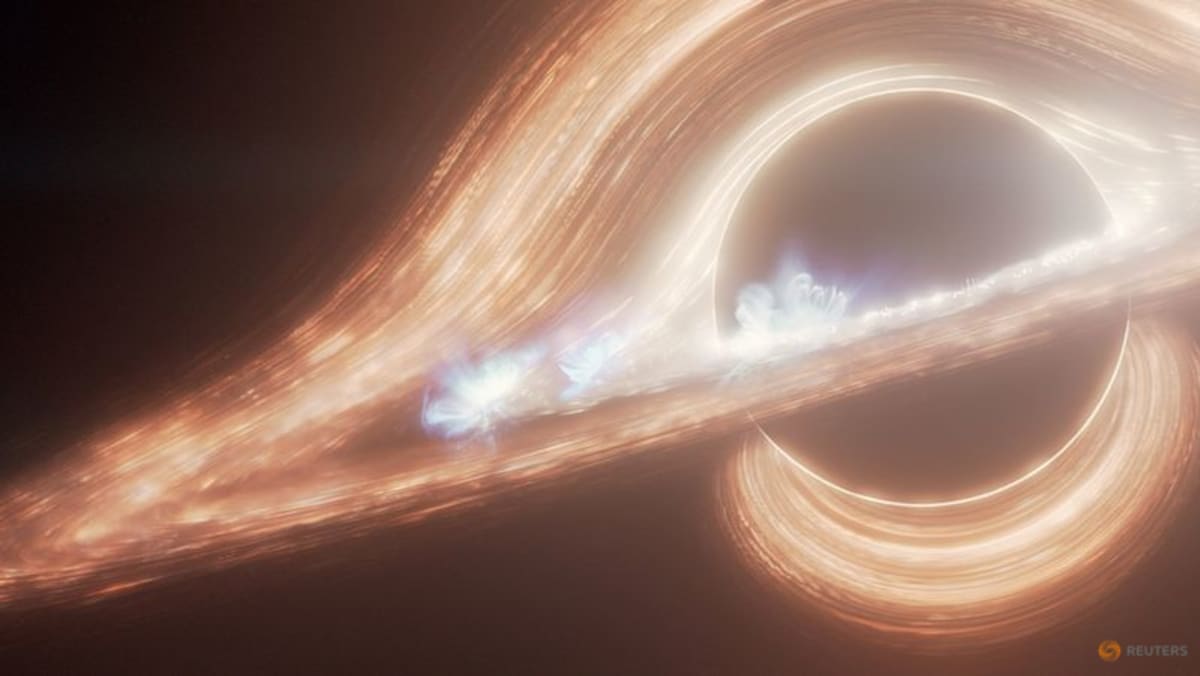WASHINGTON: NASA’s James Webb Space Telescope is providing the best look yet at the chaotic events unfolding around the supermassive black hole at the centre of our Milky Way galaxy, observing a steady flickering of light punctuated by occasional bright flares as material is drawn inward by its enormous gravitational pull.
Webb, which was launched in 2021 and began collecting data in 2022, is enabling astronomers to observe the region around the black hole – called Sagittarius A*, or Sgr A* – for extended periods for the first time, allowing them to discern patterns of activity. The region around Sgr A* was seen as bubbling with activity rather than remaining in a steady state.
The researchers observed a constant flickering of light from the swirling disk of gas surrounding the black hole – called an accretion disk. This flickering appears to be emanating from material very close to the event horizon, the point of no return beyond which everything – stars, planets, gas, dust and all forms of electromagnetic radiation – gets dragged into oblivion.
There also were occasional flares – around one to three large ones over any 24-hour period, with smaller bursts in between.
“The accretion disk is a very chaotic region filled with turbulence, and the gas gets even more chaotic and compressed as it approaches the black hole, under extreme gravity,” said astrophysicist Farhad Yusef-Zadeh of Northwestern University in Illinois, lead author of the study published on Tuesday in the Astrophysical Journal Letters.
“Blobs of gas are bumping into one another, and in some cases being forced or compressed together by the strong magnetic fields that exist within the disk – somewhat similar to what happens in solar flares,” said astrophysicist and study co-author Howard Bushouse of the Space Telescope Science Institute in Baltimore.
While these bursts arise from a mechanism similar to solar flares – which blast hot charged particles into space from our sun – they occur in a different astrophysical environment and at a vastly higher energetic level.
Black holes are exceptionally dense objects with gravity so strong that not even light can escape, making viewing them quite challenging. As such, the new observations are not of the black hole itself but of the material surrounding it.
Sgr A* possesses roughly 4 million times the mass of our sun and is located about 26,000 light-years from Earth. A light-year is the distance light travels in a year, 9.5 trillion km.
Most galaxies have a supermassive black hole residing at their core. While the events observed around Sgr A* are dramatic, this black hole is not as active as some at the centre of other galaxies and is considered to be in a relatively quiescent state.
The new findings were based on a total of about 48 hours of observations of Sgr A* made by Webb over a year, in seven increments ranging from 6 hours to 9-1/2 hours, as the researchers obtained continuous measurements of the brightness around the black hole.
The observations are providing insight into how black holes interact with their surrounding environments. Yusef-Zadeh said that about 90 per cent of the accretion disk’s material falls into the black hole while the rest is ejected back into space.
This accretion disk appears to be made up of material accumulated from the stellar winds of nearby stars – gas being blown off the surface of those stars – that is captured by the gravitational force of Sgr A*, rather than from a star that wandered too close and got shredded, the researchers said.
Astronomers previously were limited to getting a few hours of observations from ground-based telescopes or about 45 minutes at a time from the orbiting Hubble Space Telescope, giving them a piecemeal account. Webb also offers the advanced sensitivity of its Near-Infrared Camera (NIRCam), and the observations were made at two different wavelengths within the infrared spectrum.
“It has been known for a long time that Sgr A* often shows bright flares at many different wavelengths, ranging from radio, to infrared, optical and even X-rays. But most previous observations, done from both the ground-based and space-based telescopes, were limited to only being able to observe Sgr A* for a few hours at a time or were limited in their sensitivity, and hence only detected the occasional brightest flares,” Bushouse said.
